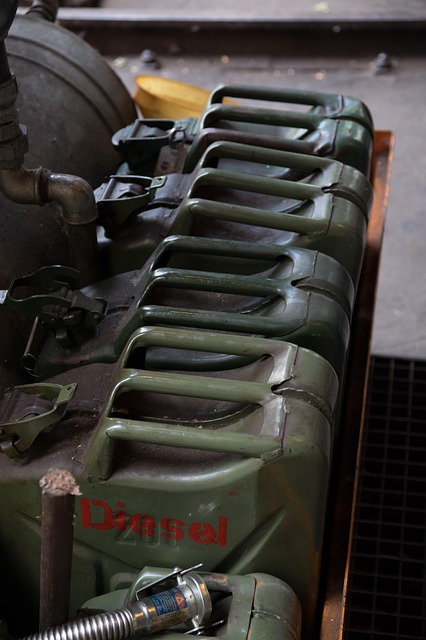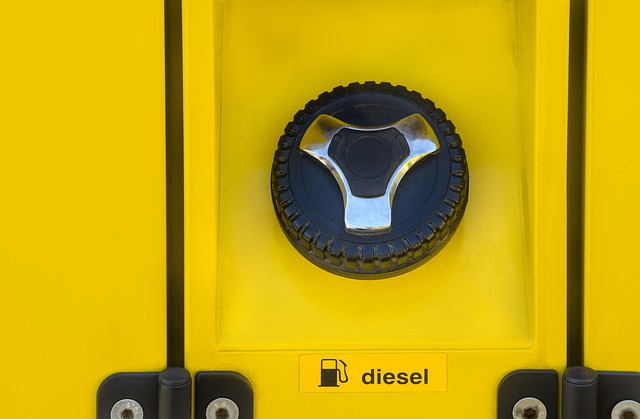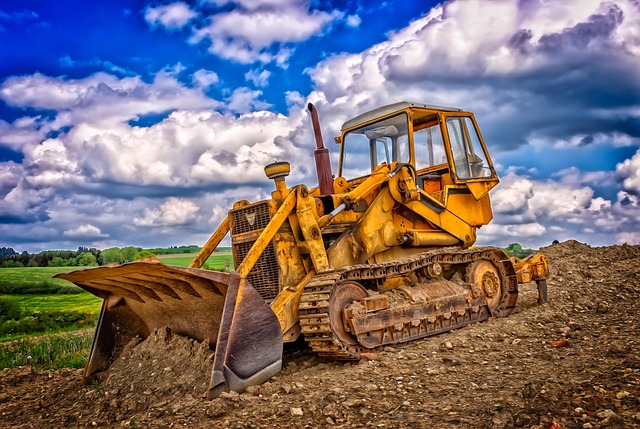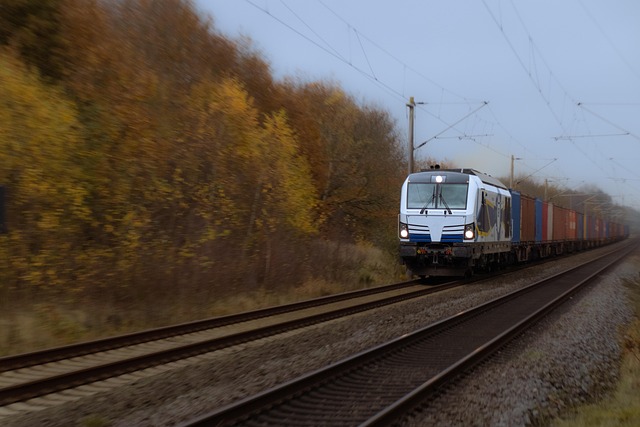In a rapidly changing environment, Select Diesel Vehicles lead the sustainable transportation revolution with advanced diesel engine technology. Catering to diverse needs, these vehicles offer better…….
Category: Select Diesel Vehicles
Select Diesel Vehicles: A Comprehensive Overview
Introduction
Welcome to an in-depth exploration of a technology that has significantly impacted global transportation and energy sectors: Select Diesel Vehicles (SDVs). This article aims to guide readers through the intricate world of SDVs, shedding light on their history, applications, and future potential. By the end, you’ll have a comprehensive understanding of why these vehicles matter and how they are shaping our modern world. From their role in reducing emissions to their economic and technological implications, we’ll delve into every angle, offering valuable insights for both industry professionals and curious enthusiasts alike.
Understanding Select Diesel Vehicles: Unveiling the Basics
Definition: Select Diesel Vehicles (SDVs) refer to a category of automotive vehicles designed to optimize diesel fuel efficiency while adhering to stringent environmental standards. These vehicles are meticulously engineered to strike a balance between powerful performance, reduced emissions, and improved fuel economy.
Core Components:
-
Diesel Engine: The heart of SDVs is their advanced diesel engine, characterized by precise injection systems, turbocharging, and high-pressure combustion chambers. These features enable efficient burning of diesel fuel, resulting in lower emissions and enhanced power output.
-
Emission Control Systems: SDVs are equipped with sophisticated emission control technologies to meet or exceed regulatory standards. Common systems include selective catalytic reduction (SCR), particulate matter filters (PMFs), and exhaust gas oxidation catalysts. These ensure that the vehicles emit fewer pollutants, contributing to cleaner air quality.
-
Fuel Efficiency Features: Optimized for fuel economy, SDVs incorporate various efficiency-enhancing features such as regenerative braking, advanced transmission systems, and lightweight materials. These innovations collectively reduce fuel consumption and lower operating costs for fleet operators.
Historical Context:
The development of SDVs can be traced back to the late 20th century when growing environmental concerns led to stricter emission regulations worldwide. Initially, the focus was on petrol vehicles, but as diesel technology advanced, it became a viable alternative for cleaner and more efficient transportation. Over time, SDVs have evolved from heavy-duty trucks and buses to light-duty cars, vans, and commercial vehicles, catering to diverse market needs.
Significance:
SDVs play a crucial role in several sectors, including transportation, logistics, construction, and agriculture. Their ability to provide robust performance while reducing environmental impact makes them an attractive choice for fleet operators and environmentally conscious consumers alike. Moreover, as the global shift towards sustainable energy sources gains momentum, SDVs stand at the forefront of this transition, offering a practical and efficient solution.
Global Impact and Trends: A World-Wide Revolution
International Influence:
The adoption of SDVs has not been limited to any single region; it is a truly global phenomenon. Each continent has witnessed significant growth in SDV sales and usage, driven by factors such as stringent emission norms, fuel price fluctuations, and increasing awareness of climate change. For instance:
-
Europe: Stricter Euro emissions standards have long been a catalyst for the adoption of SDVs across the region. Countries like Germany and the Netherlands lead the way in electric vehicle (EV) infrastructure development, with many cities offering incentives for low-emission vehicles, including SDVs.
-
North America: The United States and Canada have seen substantial growth in SDV sales, particularly among light-duty vehicles. Factors such as tax credits for clean energy vehicles and rising fuel costs have contributed to this trend.
-
Asia-Pacific: This region, including countries like Japan, South Korea, and India, is witnessing rapid electrification of both passenger and commercial vehicle segments. Government initiatives and consumer demand are driving the shift towards SDVs and other low-emission technologies.
Key Trends Shaping the Future:
-
Electric Vehicle (EV) Integration: The integration of EV technology with diesel engines is an emerging trend, offering a promising path to achieving zero-emission transportation. Hybrid SDVs, for example, combine the efficiency of diesel with the clean energy of electricity, reducing overall emissions.
-
Autonomous Vehicles: As autonomous driving technology advances, SDVs are poised to benefit from these innovations. Self-driving capabilities can optimize traffic flow, reduce accidents, and lead to more efficient fleet operations.
-
Connected and Smart Cities: The rise of connected vehicles and smart cities is creating opportunities for SDVs to play a pivotal role in urban mobility. Real-time data sharing and vehicle-to-infrastructure communication can enhance efficiency, reduce congestion, and improve overall transportation management.
Economic Considerations: A Driving Force
Market Dynamics:
The global SDV market has experienced significant growth over the past decade, driven by the aforementioned trends and regulatory changes. According to a recent report, the market size was valued at USD 372.4 billion in 2021 and is projected to reach USD 598.6 billion by 2028, growing at a CAGR of 7.5% during the forecast period (2021-2028). This growth is expected across various vehicle segments, including trucks, buses, and passenger cars.
Investment Patterns:
Governments and private investors alike are increasingly recognizing the potential of SDVs as a sustainable transportation solution. This has led to substantial investments in research and development, infrastructure, and manufacturing capabilities related to SDVs. For instance:
- Many countries have introduced tax incentives and subsidies for purchasing low-emission vehicles, including SDVs, encouraging consumers to make environmentally conscious choices.
- Major automotive manufacturers are investing heavily in diesel engine technology, with some committing to multi-billion-dollar R&D programs to develop more efficient and cleaner diesel powertrains.
- Startups and tech companies are also entering the market, offering innovative solutions such as smart fleet management systems and advanced emission control technologies.
Economic Systems and SDVs:
The integration of SDVs into economic systems has several far-reaching implications:
-
Reduced Operating Costs: Fleet operators can benefit from lower fuel consumption and maintenance costs associated with SDVs, making them a cost-effective choice for long-haul transportation and urban fleets.
-
Job Creation: The manufacturing, assembly, and maintenance of SDVs contribute to job growth in the automotive industry and related sectors, stimulating local economies.
-
Energy Security: By reducing reliance on imported fossil fuels, countries can enhance their energy security and potentially lower trade deficits associated with oil imports.
Technological Advancements: Pushing Boundaries
Recent Innovations:
-
Common Rail Technology: This advanced fuel injection system has revolutionized diesel engines by delivering precise amounts of fuel to the combustion chamber, resulting in improved efficiency and reduced emissions.
-
Selective Catalytic Reduction (SCR): SCR technology is a game-changer in emission control, allowing for the conversion of nitrogen oxides (NOx) into harmless nitrogen and oxygen, even under high-temperature conditions. This has enabled SDVs to meet stringent NOx emission standards.
-
Hybrid Powertrains: The combination of diesel engines with electric motors in hybrid SDVs offers improved fuel economy and lower emissions. These systems can draw on electricity during low-load conditions, reducing the need for frequent idling and optimizing overall efficiency.
Future Potential:
-
Artificially Intelligent Emission Control: AI-powered emission control systems could revolutionize SDV technology by predicting and adjusting engine performance in real time to optimize fuel efficiency and minimize emissions.
-
Advanced Material Science: The development of lightweight materials, such as advanced composites and aluminum alloys, will further enhance the fuel efficiency of SDVs while maintaining structural integrity.
-
Digitalization and Connectivity: SDVs are poised to become increasingly connected, with onboard diagnostics and remote monitoring capabilities improving fleet management and maintenance efficiency.
Policy and Regulation: Navigating the Landscape
Global Regulatory Frameworks:
The development and adoption of SDVs are heavily influenced by environmental policies and emission standards set by governments worldwide. Some key regulatory bodies and their roles include:
-
Europare (EU): The EU has been at the forefront of setting stringent emission norms for vehicles, with Euro 6 being the latest standard for both petrol and diesel engines. These regulations cover a wide range of pollutants, including NOx, particulate matter, and volatile organic compounds (VOCs).
-
Environmental Protection Agency (EPA) – USA: The EPA sets emission standards for US vehicles, including SDVs. Their Tier 4 standards, implemented in 2015, aimed to reduce emissions from diesel engines used in construction equipment, non-road diesel engines, and marine and aviation engines.
-
International Maritime Organization (IMO): IMO regulations play a crucial role in reducing emissions from maritime transport, with the latest phase implementing more stringent NOx emission limits for ships, encouraging the adoption of cleaner technologies, including SDVs.
Impact on Industry:
These policies have driven significant changes within the automotive industry:
-
Engine Manufacturers: Companies must invest heavily in research and development to meet or exceed these standards, leading to constant improvements in diesel engine technology.
-
Vehicle Producers: Manufacturers are required to ensure their SDVs comply with regulations, often necessitating the use of advanced emission control systems and sophisticated engineering solutions.
-
Fleets and Transport Operators: Regulations influence purchasing decisions, prompting operators to adopt SDVs or other low-emission technologies to stay compliant and reduce environmental impact.
Challenges and Criticisms: Overcoming Obstacles
Main Issues Faced:
-
Emission Concerns: While SDVs have made significant strides in reducing emissions, there is still room for improvement, particularly regarding particulate matter (PM) emissions. Critics argue that the benefits of reduced NOx emissions do not fully offset the potential health risks associated with PMs.
-
Noise Pollution: Traditional diesel engines are known for their noise, and some SDVs may still produce audible sounds, especially at lower speeds. This is a concern in urban areas where noise pollution is strictly regulated.
-
Public Perception: Negative perceptions of diesel vehicles due to historical emissions issues can be a barrier to their widespread adoption. Educating the public about the advanced emission control technologies used in modern SDVs is essential.
Strategies for Overcoming Challenges:
-
Continued Technological Advancements: The automotive industry must continue to innovate, focusing on reducing PM emissions and improving noise insulation. Hybrid and electric SDVs offer promising solutions to these issues.
-
Public Awareness Campaigns: Governments and industry bodies should collaborate on campaigns to raise awareness about the environmental benefits of SDVs, addressing misconceptions and fostering a positive public image.
-
Incentives and Regulations: Policies that encourage the adoption of SDVs while phasing out older, less efficient vehicles can accelerate the transition towards cleaner transportation.
Case Studies: Real-World Success Stories
Case Study 1: London’s Low Emission Zone (LEZ)
London, UK, implemented a Low Emission Zone (LEZ) in 2019 to reduce nitrogen oxide levels and improve air quality. The scheme requires all vehicles entering the zone to meet specific emission standards, with stricter requirements for older diesel vehicles. SDVs, particularly those equipped with advanced emission control systems, have played a significant role in helping fleet operators comply with the LEZ regulations. As a result, London has seen a notable reduction in NOx levels, demonstrating the positive impact of SDVs in urban environments.
Case Study 2: Electric Buses in Beijing
Beijing, China, has made substantial strides in electrifying its public transportation system. The city’s bus fleet is rapidly transitioning to electric and hybrid SDV buses, with over 60% of buses now being low-emission or fully electric. This initiative has not only reduced emissions but also improved noise pollution and passenger comfort. Beijing’s success story highlights the potential for SDVs to contribute to large-scale urban sustainability efforts.
Case Study 3: Diesel Trucks in North America
In the United States, many long-haul trucking companies have adopted SDVs equipped with advanced diesel engines and emission control systems. These trucks offer significant fuel savings compared to their older counterparts while meeting or exceeding environmental standards. A study by the American Trucking Associations (ATA) found that new, more efficient diesel trucks can reduce greenhouse gas emissions by up to 20% and particulate matter emissions by over 90% compared to older models.
Future Prospects: Charting New Courses
Emerging Trends:
-
Electric Vehicle Dominance: While SDVs will continue to play a vital role, the global trend towards electrification is expected to gain momentum, with electric vehicles (EVs) becoming more affordable and accessible. Hybrid SDVs could bridge the gap between conventional diesel and fully electric vehicles, offering a viable solution for various transportation needs.
-
Autonomous and Connected Vehicles: The integration of autonomous driving and connected vehicle technologies will revolutionize fleet management and urban mobility. SDVs equipped with advanced driver assistance systems (ADAS) and real-time data connectivity will be at the forefront of this transformation.
Growth Areas:
-
Commercial Vehicles: The demand for SDVs in the commercial sector, including trucks, buses, and vans, is expected to grow steadily as businesses seek cost-effective and environmentally friendly transportation solutions.
-
Developing Markets: Countries with emerging economies, such as India and several African nations, present significant opportunities for SDV adoption due to their expanding transportation networks and growing environmental awareness.
-
Off-Road Applications: SDVs are finding new applications in off-road settings, from construction sites to agricultural fields, where traditional petrol engines have been the primary choice. Their durability and efficiency make them well-suited for these demanding environments.
Strategic Considerations:
-
Investment in Research and Development: Continued R&D investments will be crucial to staying ahead of evolving regulations and meeting consumer expectations.
-
Collaboration Between Stakeholders: Governments, industry bodies, and technology providers must collaborate to create a supportive ecosystem for SDV development and deployment.
-
Public Education and Engagement: Engaging the public and educating them about the benefits of SDVs can help overcome barriers to adoption and foster a culture of sustainable transportation.
Conclusion: Powering Towards a Greener Future
The journey of Select Diesel Vehicles is a testament to human ingenuity and our relentless pursuit of sustainable solutions. From their humble beginnings as heavy-duty workhorses to becoming sophisticated, environmentally conscious machines, SDVs have come a long way. As the world grapples with climate change and seeks cleaner energy alternatives, these vehicles stand at the intersection of technology, environmental stewardship, and economic viability.
The global impact of SDVs is undeniable, with their adoption driving technological advancements, shaping transportation systems, and contributing to reduced emissions on an international scale. From case studies worldwide to the ongoing innovation in laboratories, it is clear that Select Diesel Vehicles are not just a passing trend but a cornerstone of our transition towards a greener future.
As we look ahead, the potential for SDVs to play a pivotal role in various sectors remains immense. With continued advancements, they can help meet the growing demand for sustainable transportation while offering cost-effective solutions for businesses and consumers alike. The future of mobility is poised to be cleaner, quieter, and more efficient, thanks to the relentless progress of Select Diesel Vehicles.
Frequently Asked Questions (FAQs):
Q: Are SDVs more fuel-efficient than petrol engines?
A: Yes, generally. Diesel engines have a higher thermal efficiency, meaning they can convert a larger proportion of fuel into usable energy, resulting in better fuel economy.
Q: Can SDVs help reduce traffic congestion?
A: Absolutely. By improving fuel efficiency and reducing emissions, SDVs can contribute to lower fuel costs for fleet operators, potentially leading to reduced operating expenses and, consequently, lower transportation costs overall. This could, in turn, ease financial pressures on commuters, potentially alleviating traffic congestion.
Q: How do SDVs impact public health?
A: Modern SDVs equipped with advanced emission control systems produce far fewer pollutants compared to older diesel engines. This is particularly important for urban areas where air quality is a significant public health concern. Reductions in nitrogen oxides and particulate matter can lead to healthier communities.
Q: Are there any tax incentives available for purchasing SDVs?
A: Yes, many countries offer tax incentives, subsidies, or reduced registration fees for low-emission vehicles, including SDVs. These incentives aim to encourage the adoption of cleaner technologies while providing financial benefits to consumers.
Q: Can SDVs be converted to run on alternative fuels?
A: While converting a diesel engine to run solely on alternative fuels like biofuels or hydrogen is technically feasible, it may not always be cost-effective or practical. Hybrid systems, however, that combine diesel with electric power are becoming more common and offer improved flexibility.
Select Diesel Vehicles: Lasting Performance, Minimal Maintenance
Selecting diesel vehicles offers longevity, minimal upkeep, and cost savings. Advanced engineering ensures superior performance and cold weather reliability. Lower service intervals and eco-friendly c…….
Protecting Select Diesel Vehicles: Global Solutions for Long-Term Safety
Post-manufacture security for Select Diesel Vehicles (SDVs), gaining popularity due to fuel efficiency and environmental benefits, is crucial. Increasing connectivity and cybersecurity risks necessita…….
Protecting Select Diesel Vehicles: Comprehensive Post-Manufacture Solutions
Post-manufacture protection is vital for select diesel vehicles, addressing diverse driving conditions and preserving long-term reliability and performance. Choosing these vehicles for fleets offers a…….
Select Diesel Vehicles: Green Transport for a Sustainable Future
As demand for sustainable transportation grows, select diesel vehicles merge traditional power with eco-friendly technology. Advanced diesel engines like SCR and ULSD reduce emissions and improve effi…….
Explore Ready Diesel Cars: Select Your Perfect Vehicle Now
Discover our curated selection of select diesel vehicles designed for performance and sustainability, offering top reliable engines for optimal fuel efficiency. From fuel-efficient wagons to powerful…….
Select Diesel Vehicles: Longevity, Sustainability, Performance Guaranteed
Select Diesel Vehicles are a top choice for small businesses and eco-conscious consumers seeking efficient, durable, and sustainable transportation. With superior fuel economy, reduced emissions, and…….
Streamline Logistics: Select Diesel for Quick, Safe Acquisitions
In today's competitive market, efficient logistics and fleet management are crucial, especially for businesses relying on mobile assets. Selecting reliable diesel vehicles, like modern diesel SUV…….
Local Expertise, National Scale: Select Diesel Vehicles for Quality
Leveraging local knowledge in selecting diesel vehicles optimizes performance and reliability for specific regional conditions. Strict Quality Assurance strategies ensure national standards meet envir…….
Select Eco-Friendly Diesel Options for a Greener Future
Stricter emission standards drive demand for cleaner diesel options. Modern advancements offer reduced-emission models without sacrificing performance. Electric diesel hybrids combine efficiency and e…….









